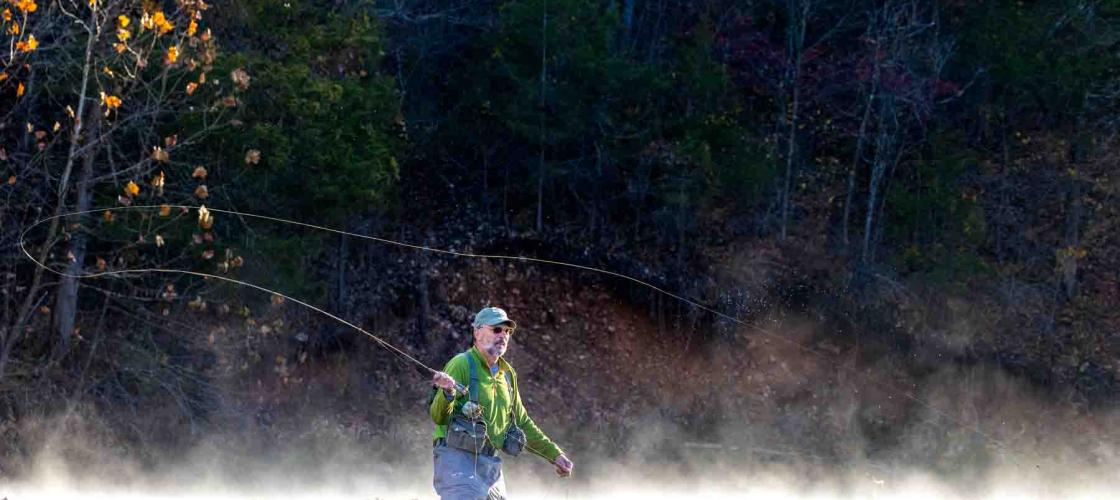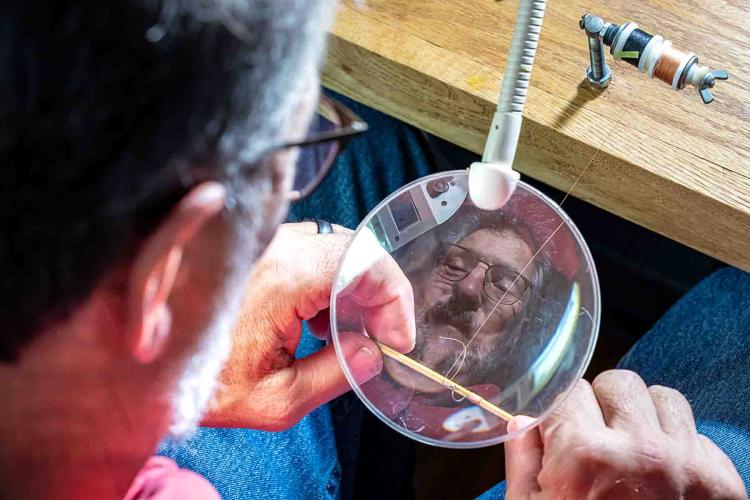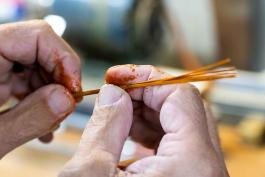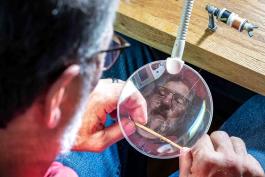
I was introduced to a bamboo rod as a young boy who loved fishing in the countryside of Thailand but couldn’t afford a modern rod-fitting with a reel. My set-up was simple — a fishing line tied to the end of a piece of bamboo. It did the trick of catching fish and allowed me to develop a deep connection with the outdoors.
When I heard of a fly rod made of bamboo, it brought back my fondest memories of childhood. However, this rod is not the simple bamboo pole that I once used. Rather, it is a high-quality bamboo rod that has been painstakingly processed by splitting the bamboo, stripping it into 70 or more pieces, and sanding and varnishing, which can take months before it is crafted into an elegant fly rod that resembles a piece of art. Creating one of these fine rods is a process that requires skilled craftsmanship with a degree of passion and persistence.
But this type of rod is not new. Perfecting the “split cane” method in the United States can be traced back over 150 years.
Origin of the Cane
Historically, manufacturers of fly rods searched for lighter and stiffer materials of smaller diameter. Rod makers found the best combination of lightness and strength in bamboo.
Before split cane, most rods were made of woods, which were exceedingly heavy, easy to break at the tip, and not practical for a fly-fishing rod. In the U.S., the first rod made by splitting bamboo and gluing it together into a hexagonal six-strip design that is still used today was developed in the late 18th century.
Most people may be surprised to learn that bamboo is actually part of the giant grass family. The majority of the 1,450 species of true bamboo, which are collectively known as cane, are found throughout the world but originated in southern and southeastern Asia. The U.S. is home to three very distinct native species of Arundinaria — A. appalachiana, A. gigantea, and A. tecta — and all of these are native to the southeast.
Although the strength of bamboo lies in the fibers concentrated toward the periphery of the culm (stalk), not all bamboos are created equally. Bamboo is a natural material, and with that comes inherent variations in density, flexibility, and durability. In fact, the bamboo’s quality plays a prominent role in a rod’s performance.
Fibrovascular bundles or “power fibers” give bamboo its stiffness and strength. Rod makers look for culms with a dense layer of fibers, characteristic of the best specimens found only in Tonkin bamboo, which has the highest amount of fibrovascular bundles. These bundles are concentrated toward the outer surface of the hollow bamboo culm.
Tonkin bamboo (Arundinaria amabilis McClure) is named after American botanist Floyd Alonzo McClure, who scientifically described the plant he studied in China and recognized in 1925.
Tonkin bamboo was first imported to the U.S. in 1897. Prior to Tonkin, Calcutta bamboos from India were widely used to make fly rods; however, after World War I, Tonkin bamboo fly rods replaced them. This so-called “Tonkin cane” was much stiffer and stronger than Calcutta and produced a steelier fly rod.
Making the Split Cane
To craft a bamboo rod, culm is split, heat-treated, planed to taper into smaller strips, and glued to up to a 65-thousanths-of-an-inch tip, wrapped in silk, varnished a honey-colored finish, and equipped with a grip. Even with highly skilled rod makers, it can take anywhere from three to six months to design one fly rod.
Even though bamboo is technically a grass, it looks and works like wood, so woodworking skills translate. But the main skill you need is the ability to use tools — hand tools.
Working with tools, fixing things, and woodworking are things Bill Lamberson, professor emeritus of animal sciences at the University of Missouri, has been doing for most of his life. He found that creating his fly rods required taking some combination of patience, skill, and discipline to another level. It took him 18 years to successfully construct his first bamboo rod in 1998, a rod he has to this day.
His interests in the art of crafting bamboo rods began when he purchased old bamboo rods at garage sales and refurbished them, but it later became logical for him to try to craft his own rod. He was mentored by Tom Morgan, who owned Winston Rod company, and later produced equipment to plane bamboo rods. But the core motivation is the ability to design and construct a rod that fits his personal style of fishing.
“Bamboo has a different feel than graphite, and it encourages fishing at a more leisurely pace,” said Lamberson.
Since his retirement in 2021, Lamberson has crafted at least one rod a month and has built over 300 bamboo rods over the years and donated them to conservation charities for fundraising, including Mid-Missouri Trout Unlimited. He is well regarded in the rod-making community, which appreciates his craftsmanship.
While many of today’s fine fishing rods are made of composite graphite, fishing with a bamboo rod is something that no artificial material can duplicate for its beauty and delicacy. And crafting a natural material that was once alive into a beautiful piece of art is a testament of combining human grace with nature. According to Lamberson, fly-fishing, and in particular trout fishing, seems to happen in beautiful places and is in harmony with the environment.
“I have caught a lot of trout in my lifetime, and my fishing is now more about the experience than about catching fish,” he said.
And fishing with a bamboo fly rod that he has personally crafted and flies that he has tied seem to mesh well together.
























Also In This Issue

Conserving important areas so diverse life can flourish
And More...
This Issue's Staff
Editor - Angie Daly Morfeld
Associate Editor - Larry Archer
Photography Editor - Cliff White
Staff Writer - Kristie Hilgedick
Staff Writer - Joe Jerek
Staff Writer – Dianne Van Dien
Designer - Shawn Carey
Designer - Marci Porter
Photographer - Noppadol Paothong
Photographer - David Stonner
Circulation - Laura Scheuler






















